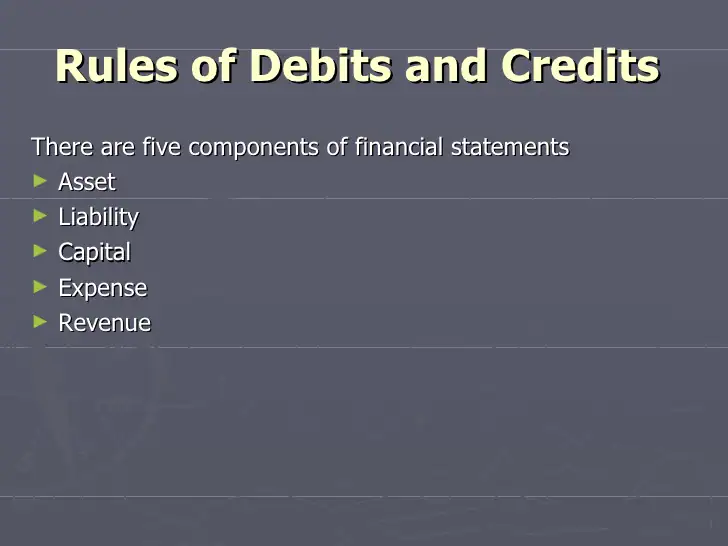
For example, a restaurant or a busy retail store both process a lot of transactions and take in a lot of cash. They might reconcile on a daily basis to make sure everything matches and all cash receipts hit the bank account. On the other hand, a small online store—one that has days when there are no new transactions at all—could reconcile 36 business expense categories for small businesses and startups on a weekly or monthly basis. For the most part, how often you reconcile bank statements will depend on your volume of transactions.
To see your business as it really is
NSF checks are an item to be reconciled when preparing the bank reconciliation statement, because when you deposit a check, often it has already been cleared by the bank. But this is not the case as the bank does not clear an NFS check, and as a result, the cash on hand balance gets reduced. When done frequently, reconciliation statements help companies identify cash flow errors, present accurate information to investors, and plan and pay taxes correctly.
After adjustments are made, the book balance should equal the ending balance of the bank account. A bank reconciliation statement can help you identify differences between your company’s bank and book balances. As with deposits, take time to compare your personal records to the bank statement to ensure that every withdrawal, big or small, is accounted for on both records.
- She has more than five years of experience working with non-profit organizations in a finance capacity.
- It’s important to keep in mind that consumers have more protections under federal law in terms of their bank accounts than businesses.
- You need to make sure that all the deposits you’ve recorded in the books reflect in the bank statement.
- Reconciling your bank statements allows you to identify problems before they get out of hand.
Step 2: Compare the deposits and withdrawals
Such errors are committed while recording the transactions in the cash book, so the balance as per the cash book will differ from the passbook. At times, the balance as per the cash book and passbook may differ due to an error committed by either the bank or an error in the cash book of your company. The debit balance as per the cash book refers to the deposits held in the bank, and is the credit balance as per the passbook. The reconciliation statement allows the accountant to catch these errors each month.
You can also opt to use a simple notebook or spreadsheet for recording your transactions. Doing bank reconciliations regularly helps companies control their financial transactions and easily track errors and omissions. A bank reconciliation statement should be completed monthly but can even be done weekly if your company processes a large number of transactions. The company reflected the payment it received from debtors in its cashbook, but the payment hasn’t yet reflected in the bank account. After reviewing all deposits and withdrawals, adjusting the cash balance and accounting for interest and fees, your ledger’s ending balance should match the bank statement balance. If the two balances differ, you’ll need to look through everything to find any discrepancies.
First, there are some obvious reasons why there might be discrepancies in your account. If you’ve written a check to a vendor and reduced your account balance in your internal systems accordingly, your bank might show a higher balance until the check hits your account. Similarly, if you were expecting an electronic payment in one month, but it didn’t actually clear until a day before or after the end of the month, this could cause a discrepancy. After adjusting the balance as per the cash book, you’ll need record all adjustments in your company’s general ledger accounts.
Simplify bank reconciliations with automated expense tracking

Maintaining accurate financial records makes it easier to organize your taxes when it comes time to file. Regular bank reconciliation saves you from having to review a full year of financial records—instead, you can quickly consult your reconciliation statements to review any required information. Bank reconciliation isn’t just important for maintaining accurate business finances—it also ensures your customer and business relationships remain strong. Regular bank reconciliation double-checks that all payments have been accurately processed. This ceo salary includes payments by customers to your company and payments from your company to employees, contractors, and other goods and services providers.
Advantages of bank reconciliation statements
Companies prepare bank reconciliation statements as a comprehensive accounting comparison tool. A company can ensure that all payments have been processed accurately by comparing their internal financial records against their bank account balance. a small business guide to cost centers Bank reconciliation statements are also important for alerting a company in case of fraud or error. To be effective, a bank reconciliation statement should include all transactions that impact a company’s financial accounts.
Bank reconciliation statements ensure that payments were processed and cash collections were deposited into the bank. Bank reconciliation statements are often used to catch simple errors, duplications, and accidental discrepancies. Sometimes your current bank account balance is not a true representation of cash available to you, especially if you have transactions that have not settled yet. If you’re not careful, your business checking account could be subject to overdraft fees.
However, you typically only have a limited period, such as 30 days from the statement date, to catch and request correction of errors. All of your bank and credit card transactions automatically sync to QuickBooks to help you seamlessly track your income & expenses. Also, if you’ve made a check payment at the end of the month, it might not clear until the following reporting period. Bankrate.com is an independent, advertising-supported publisher and comparison service. We are compensated in exchange for placement of sponsored products and services, or by you clicking on certain links posted on our site.



